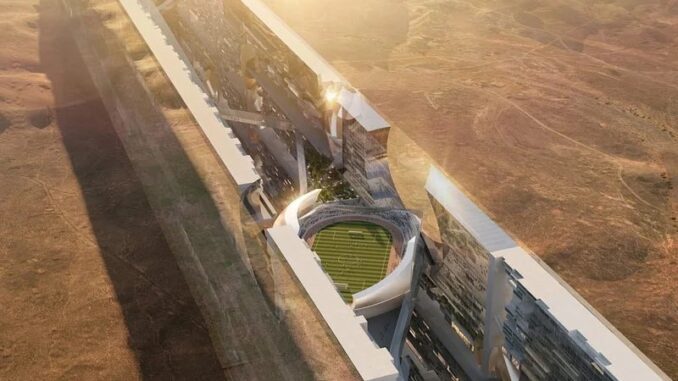
Back in 1962, Joseph Barbera and William Hanna created a world of the future and tucked the prophetic visions inside of an entertaining animation known as The Jetsons. There were flying cars, innovative residential concepts, and artificial intelligence living among humans in the ground-breaking cartoon.
Slowly, but surely, those predictions are manifesting as the realities of climate change, population increases, and advanced technology affect our everyday lives.
The Story Behind The Jetsons
Saudi Arabia is well on the way to creating what is called a “line city,” a new vision of a city that turns the traditional sprawl into futuristic, eco-efficient residential and commercial real estate contained by two parallel mirrors that stretch across 26,000 square kilometers, allowing for at least nine million people to be housed within its boundaries.
Located just north of the Red Sea in the middle of the desert, the city would not have any cars, streets or carbon emissions, but would rely mainly on solar energy, automation, and “zero gravity urbanism,” a three-dimensional form of movement. An underground public transportation system will support the city, while the city is decorated with parks and nature throughout.
Some other interesting additions to the city would be an artificial moon, cloud seeding, human genome modification, robotic maids, flying taxis, and more.
Saudia Arabia’s Line City
The $500 billion mega-development is part of Saudi Arabia’s NEOM plans, a public investment fund that is reliant on oil exports, detailed in a proposal called Vision 2030. Vision 2030 is a unique transformative economic and social reform blueprint that is aggressively advancing Saudi Arabia’s architectural structure, innovation, livability, and sustainability, among other things.
“Saudi Arabia’s Vision 2030 is a pathway to the future. Unveiled in 2016, it represents a transformative and deeply ambitious plan to unlock the Kingdom’s vast potential, by creating a diversified, innovative and world-leading nation, for the benefit of future generations. In the five years since the Vision’s launch, Saudi Arabia has witnessed both unprecedented change and remarkable growth.”
-Saudi Arabia’s Vision 2030
There are some hurdles to Saudi Arabia’s plans for the future, however. Indigenous people who occupy the land along the coastline of the Red Sea are facing displacement, while many vocal protestors have been targeted.
In addition, the building initiative may be more harmful to wildlife and the environment than originally accounted for, and the development time and cost may extend beyond the goal of 2030.



